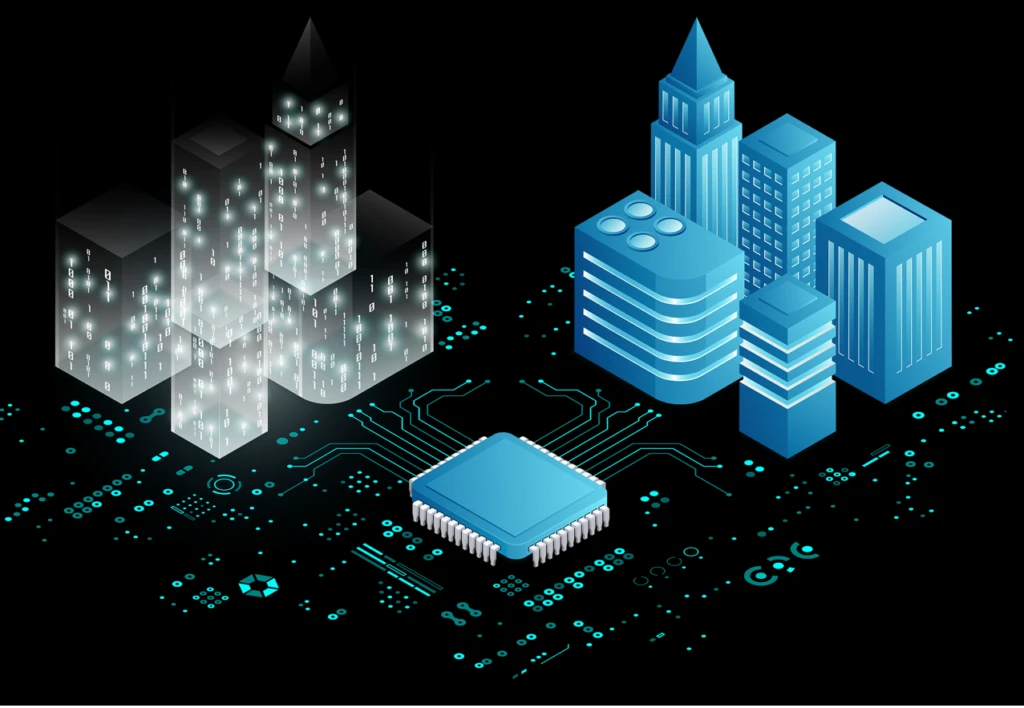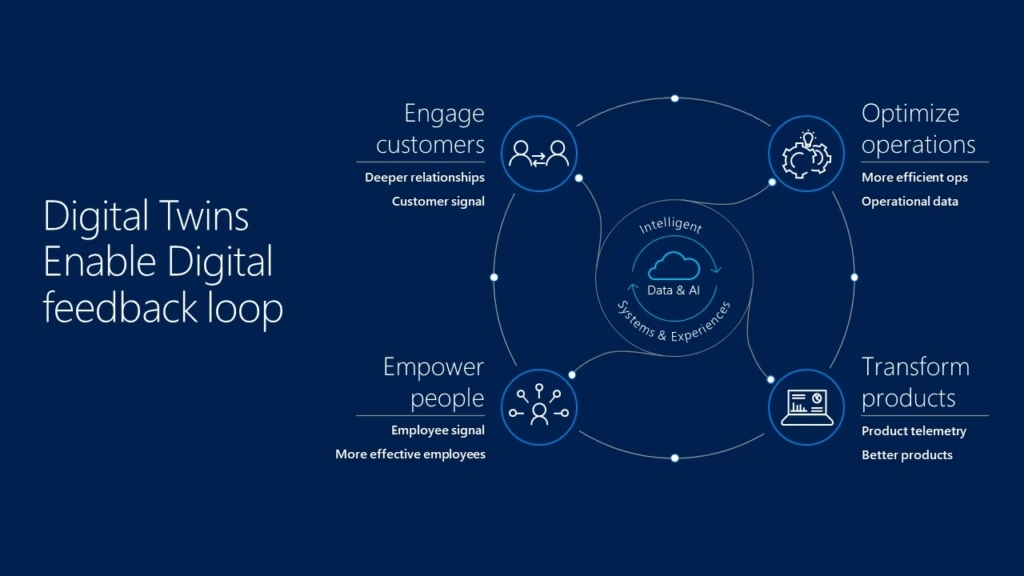
Manufacturers gain a competitive advantage with digital twins

In 1970 NASA faced a crisis: A ruptured propellant tank threatened the lives of three astronauts aboard Apollo 13. To save them, NASA engineers used a replica of Apollo 13 on earth, and used resources they knew were available to the astronauts to devise a safe method for getting them home.
Today that same approach, now dubbed a digital twin, has emerged as a powerful tool that makes manufacturers more agile and innovative. A digital twin is a virtual replica of a physical object, machine part, system, process, or entire lifecycle. This technology allows real-time monitoring and control, the ability to learn with artificial intelligence (AI) and machine learning (ML), and a method for improving systems and designs over time.
Microsoft believes that digital twins should be a part of any manufacturer’s IT plan. To help you learn more about this technology and its exciting potential, we’ve released a few resources that we want to share with you. One is the e-book Enhance innovation and agility with digital twins. It summarizes digital twin technology, offers real-world success stories, and shows how digital twins can be applied from supply chains to factory floors to spaces like warehouses and buildings as well as manufactured products.
We’re also offering an on-demand webinar featuring PTC, Sight Machine, and Ansys in a compelling discussion on the potential of digital twins to transform manufacturing.
You can also learn how Microsoft is partnering with The Marsden Group and Accenture to make it easier for you to innovate and scale with digital twins—from one plant to hundreds.
Digital twins unlock powerful capabilities
To help build these digital twins, Microsoft Azure Digital Twins, a Platform as a Service (PaaS) that manufacturers can use to rapidly develop and create comprehensive models of physical environments, to model the relationships and interactions between people, places, devices, and more. Azure Digital Twins makes it simple to query data from a unified space rather than disparate sensors, and build reusable, highly scalable, spatially aware experiences that link streaming data across the physical and digital world.
Used in conjunction with the internet of things (IoT), today’s digital twins unlock multiple capabilities. Manufacturers can use them to remotely monitor and manage production, gain invaluable information for real-time decision-making, improve strategic planning and operational efficiency, and innovation.
This kind of power is especially important today when change is the only constant. Demand uncertainty and supply chain disruptions are pushing existing planning systems to the brink of failure.

Digital twins can help give manufacturers clarity by creating a digital feedback loop that fosters exponential learning and adaptability. Says Çağlayan Arkan, Vice President, Manufacturing Industry, Microsoft: “Digital twins give you the power of prescience to re-write the future of your business…from empowering remote, intelligent operations to ensuring business resiliency, to enabling the agility to predict and respond to real-time changes.”
Real-world transformation
Forward-thinking manufacturers are deploying digital twins to keep up with the unprecedented pace of data flow, connectivity, and collaboration. They can start with specific, limited scenarios that provide immediate business value, then expand as new opportunities become apparent.
To cite just one example, Rolls-Royce uses digital twins to help it manage more than 13,000 commercial aircraft engines. Within these engines, Rolls-Royce has embedded hundreds of sensors that provide telemetry for each engine, including insight into engine health, performance, fuel usage, service needs, and more.
This massive amount of data is continuously collected, monitored, and combined via a digital twin solution built on Microsoft Azure. The digital twin enables a digital feedback loop that not only drives product updates and informs and optimizes maintenance processes, it also enables Roll-Royce to monitor the entire fleet of these engines in flight, generating optimal fuel recommendations and flight routes that deliver significant cost reductions to airline customers.
In fact, by deploying digital twins, Rolls-Royce could create a new business model, offering their Product as a Service known as “Power by the Hour.”
But that’s just a start. Across industries, we’re seeing digital twins improve maintenance and asset uptime, optimize production lines, improve supply-chain visibility and risk management—even simulate building construction for better design, occupant comfort, and improved long-term maintenance.
Microsoft and its independent software vendors (ISV) and systems integrators (SI) partners offer an invaluable ecosystem for businesses such as yours to digitize your supply chain, deploy advanced productivity tools, and create a company that delivers real innovation for customers. We hope you’ll take a few moments to explore Microsoft Azure Digital Twins and the Microsoft partners creating innovative digital twin solutions for manufacturing companies around the globe.
Additional Resources
Azure Digital Twins now generally available: Create IoT solutions that model the real world




